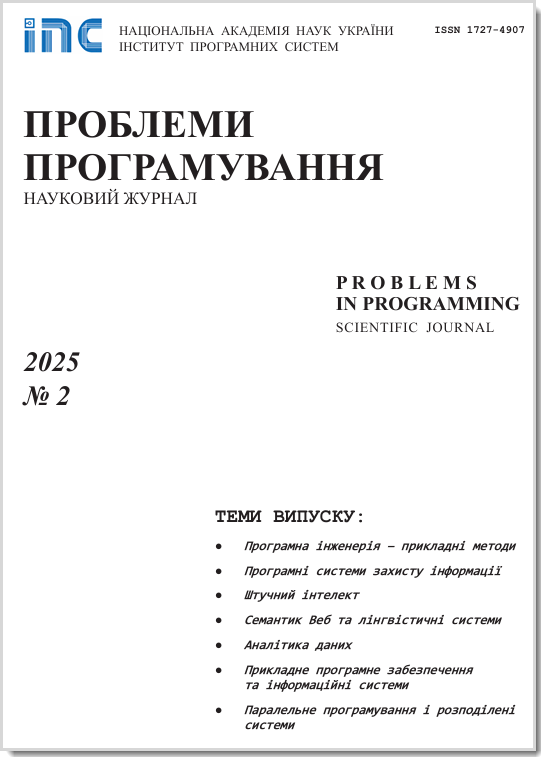A simulator of mechanisms of acute control of human hemodynamics
Abstract
A software simulator (SS) of the physiological mechanisms that provide the acute control of human hemodynamics is created. SS is based on a mathematical model (MM) describing reflexes, the source of information in which are mechanoreceptors located in the right ventricle of the heart, in the aortic arch and in the carotid sinuses. A previously developed model of an uncontrollable cardiovascular system with a pulsating heart is used as an object of control (OC). In MM, the duration of the cardiac cycle, the rigidity and the unstressed volume of the vascular areas of the body are the target of regulatory actions. MM and OC are realized in C++. Oriented to the physiologist, the interface provides him / her with the ability to turn on / off any of the reflexes, to conduct test studies (including imitation of dosed blood loss or blood transfusion). SS is still functions autonomously. Subsequently, after modeling also endocrine physiological mechanisms of long-term effects on hemodynamics, SS will become a virtual tool for research of complex mechanisms that optimize human hemodynamics.
Problems in programming 2019; 1: 90-98
Keywords
Full Text:
PDF (Русский)References
Brands M. W. Chronic Blood Pressure Control. Compr. Physiol., 2012. Vol. 2. CrossRef
Grygoryan R.D. The optimal circulation: cells' contribution to arterial pressure. 2017, Nova Science, N.Y., 298 p.
Grygoryan R.D., Lissov P.N. A software imitator of human cardiovascular system basen on its mathematical model. Problems in programming. 2004, N 4. P. 100–111.
Grygoryan R.D., Lissov P.N., Aksionova T.V., Moroz A.G. A specialized software-modeling complex «PhysiolResp». Prob-lems in programming. 2009, N 2. P. 140–150.
Larrabide I., Blanco P.J., Urquiza S.A., Dari E.A., Ve’nere M.J., de Souza e Silva N.A., Feijo´ R.A. HeMoLab – Hemody-namics Modelling Laboratory: An applica-tion for modelling the human cardiovascu-lar system. Computers in Biology and Med-icine. 2012. Vol. 42. P. 993–1004. CrossRef
Ježe F., Kulhánek T.,Kalecký K., Kofránek J. Lumped models of the cardiovascular system of various complexity. Biocyber-netics and Biomedical Engineering. 2017. Vol. 37. Issue 4, P. 666–678. CrossRef
Kulhánek T., Kofránek J., Mateják M. Modeling of short-term mechanism of arte-rial pressure control in the cardiovascular system: Object-oriented and acausal ap-proach. Computers in Biology and Medi-cine, 2014. Vol. 54. P. 137–144. CrossRef
Grygoryan R.D., Degoda A.G., Dzhu-rinsky E.A., Kharsun V.S. A simulator of the pulsatile heart. Problems in program-ming. 2017.
Mahdi A., Sturdy J., Ottesen J.T., Olufsen M.S. Modeling the Afferent Dynamics of the Baroreflex Control System. PLoS Com-put Biol. 2013, 9(12): e1003384. CrossRef
Raphan T., Cohen B., Xiang Y., Yakushin S. B. A Model of Blood Pressure, Heart Rate, and Vaso-Vagal Re-sponses Produced by Vestibulo-Sympathetic Activation. Front Neurosci. 2016. Vol. 10. P. 96–104. CrossRef
Stewart J.M. Update on the theory and management of orthostatic intolerance and related syndromes in adolescents and chil-dren. Expert Rev. Cardiovasc. Ther. 2012. Vol. 10(11). P. 1387–1399. CrossRef
Kawada T., Yamamoto K., Kamiya A., Ariumi H., Michikami D., Shishido T., Sunagawa K., Sugimachi M. A derivative-sigmoidal model reproduces operating point-dependent baroreflex neural arc transfer characteristics. Jpn. J. Physiol. 2005. Vol. 55(3). P. 157–163. CrossRef
DOI: https://doi.org/10.15407/pp2019.01.090
Refbacks
- There are currently no refbacks.




